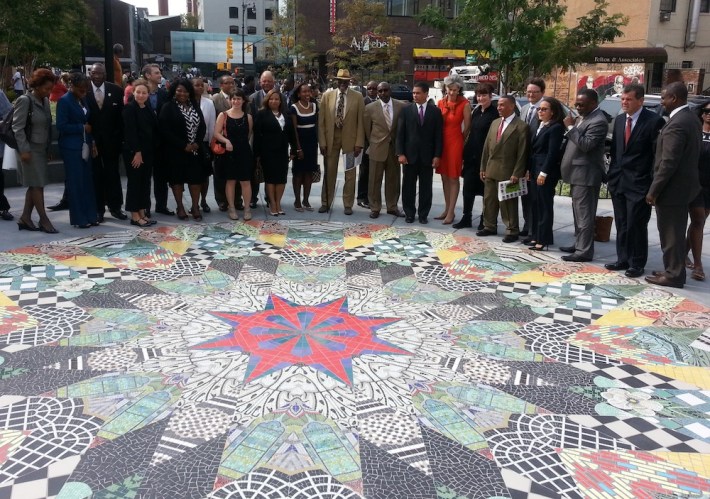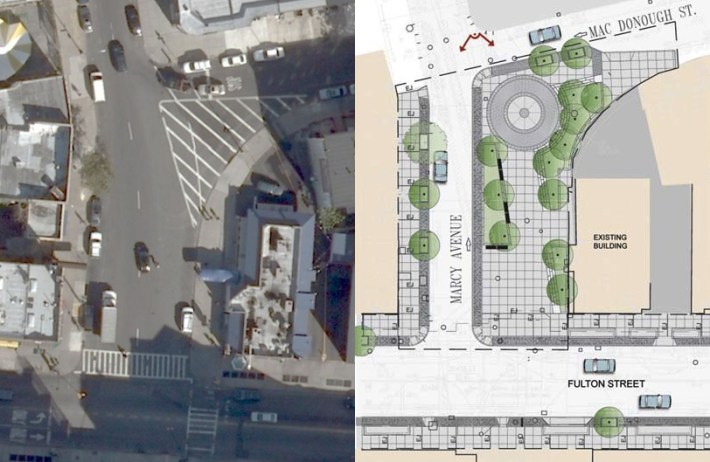
More than 100 people joined local leaders and city agency chiefs this morning to cut the red ribbon for Marcy Plaza, a new pedestrian space carved from what used to be an extra-wide stretch of asphalt next to a one-story Burger King in Bedford Stuyvesant.
The plaza, part of a larger $20 million streetscape upgrade stretching from Bedford Avenue to Troy Avenue, sits across Fulton Street from Restoration Hall and Restoration Plaza, which received its own facelift recently. In addition to these projects, crews nearby were busy installing bus bulbs for Select Bus Service on Nostrand and Bedford Avenues this morning.
In addition to seating and trees, the plaza features a circular sidewalk mosaic near MacDonough Street, created by artist Ellen Harvey. It includes patterns inspired by architectural features of historically significant buildings and parks throughout the neighborhood selected in consultation with Community Board 3.
"Our streets are public spaces in their own right," said DOT assistant commissioner Andy Wiley-Schwartz. "We are standing in what was the middle of the road a year ago." Wiley-Schwartz referenced the project's planning history, which dates to the 2002 Fulton FIRST planning initiative, followed by an application to DOT's plaza program in 2008. "Most of you know these plazas don't happen by accident or just by government action; they are a product of a community's effort and interest," Wiley-Schwartz said.

The plaza is already being used as a staging ground for events hosted by the Bedford Stuyvesant Restoration Corporation, including cooking demonstrations, farmers markets, theater, and neighborhood bike rides.
Before the ribbon-cutting, I spoke with Laura Hansen of the Neighborhood Plaza Partnership, a project of the Horticultural Society of New York that aims to support plaza maintenance in low-income neighborhoods. Although Marcy Plaza can receive support from both the Bedford Stuyvesant Restoration Corporation and a business improvement district, not all communities have such robust partners.
"It's an equity issue," Hansen said. Because the city won't install a plaza without an accompanying maintenance partner, areas without that capacity often have a harder time bringing a plaza to their community. Although some groups rely on volunteers, sustaining unpaid stewardship can be difficult.
"It's a really heavy lift for a small organization to take on, but they want to, because these spaces are so great," Hansen said. That's where her group comes in, helping communities maintain tables, chairs, and plantings, as well as providing support for programming like live music.
The Neighborhood Plaza Partnership has been working with plazas in East New York, Jackson Heights, Corona, and Ridgewood to see what role it can play in each location to help the plazas remain vibrant gathering spaces. Currently funded by donations and grants, the partnership could in the future advocate for public funds to support plaza maintenance, Hansen said.





